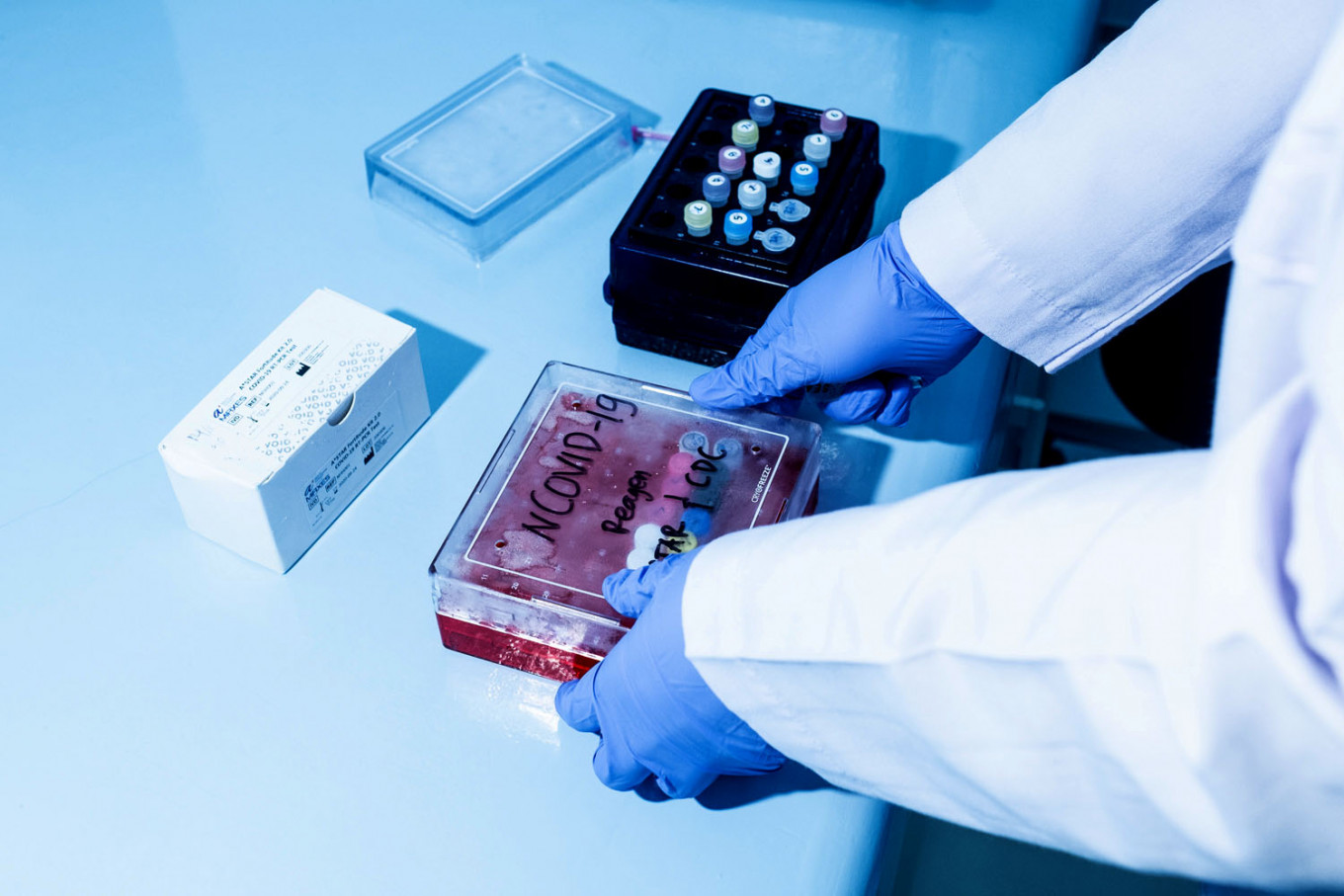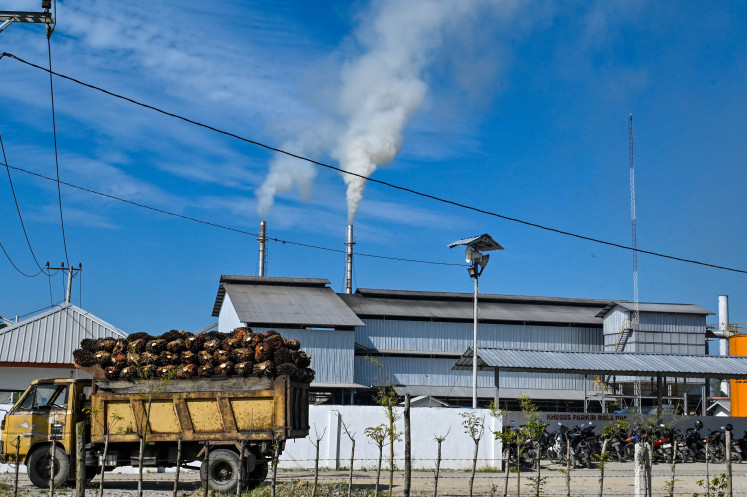Popular Reads
Top Results
Can't find what you're looking for?
View all search resultsPopular Reads
Top Results
Can't find what you're looking for?
View all search resultsDoes ASEAN have a zoonotic disease prevention and control plan?
The occurrence of emerging zoonotic diseases is set to increase along with greater animal-human interactions driven by certain factors.
Change text size
Gift Premium Articles
to Anyone
I
t is estimated that more than 60 percent of emerging infectious diseases are zoonoses. Originating from the Greek word “zoon” meaning animal and “nosos” meaning disease, the word “zoonosis” (in the singular form) refers to a disease that spreads from animals to humans.
Zoonoses are caused by the transmission of pathogens such as viruses, parasites, bacteria or fungi either by direct contact or indirect contact through the environment with the help of vectors or carriers. According to the World Health Organization (WHO), 75 percent of all emerging infectious diseases are of animal origin with approximately 60 percent of human pathogenic origins.
Southeast Asia is no stranger to infectious disease outbreaks. As far back as 1999, the first nipah virus outbreak originated in the Malaysian pig farming community. The 1999 nipah outbreak was not widespread in Southeast Asia but a subsequent outbreak in Bangladesh in 2001 resulted in an annual repeat of the disease.
Four years after the nipah outbreak, Southeast Asia experienced the Severe Acute Respiratory Syndrome (SARS) outbreak in February 2003. A zoonotic disease with origins from Guangdong province, China, SARS CoV-1 quickly spread to 29 countries, infected more than 8,000 and killed 774 worldwide – figures that were, at that time, frightening but are now dwarfed by the climbing COVID-19 infection and death rates.
A decade later, the region saw another outbreak, this time the H5N1 Avian Influenza A. Intermittently, the region was on the alert for the Middle East Respiratory Syndrome (MERS-CoV) that originated in Saudi Arabia in 2012 and the Ebola virus in West Africa in 2014.
Many of these public health emergencies have their origins in developing countries where the world’s most vulnerable populations live and are most adversely impacted by any outbreak. ASEAN has a cumulative total of 779,500 COVID-19 cases and over 19,000 deaths at the time of writing.
ASEAN’s mortality rate stands at 2.4 percent, below the global average of 3 percent. Indonesia and the Philippines are reporting daily cases in the thousands, while some ASEAN countries such as Myanmar, Vietnam and Thailand are battling potential subsequent waves of infection.
COVID-19 is suspected to be a zoonotic disease, but how the virus was transmitted from animals to humans has not been conclusively determined.
According to the World Organization for Animal Health (OIE), genetic sequencing data suggests that SARS-CoV-2 is closely related to other coronaviruses found in bats, but there is insufficient scientific evidence to identify the source or to explain the transboundary transmission from animals to humans.
In May, the World Health Assembly passed a unanimous decision to investigate the origins of COVID-19. This decision was supported by China, but it appears that the process may be delayed pending China’s approval of a list of investigative experts recommended by the WHO. Without an understanding of the origins of the virus, any work on stopping the progress of the disease, genome sequencing work and vaccine development would be incomplete.
Understanding the interface between animal and human health has become a key focal point in the prevention, monitoring and control of any future disease outbreaks.
The occurrence of emerging zoonotic diseases is set to increase along with greater animal-human interactions driven by certain factors such as climate change, deforestation, loss of biodiversity, intensive farming systems that encroach on natural habitats, increased agricultural trade and increased international travel.
Outbreaks of animal-to-human transmissions have become more frequent in the last decades. When populations are faced with a particularly virulent strain that facilitates fast human-to-human transmission, the pandemic is multiplied by the absence of reliable early warning systems and weak public health systems.
ASEAN has been working on an agreement for the prevention, control and eradication of transboundary animal diseases and zoonoses since 2012.
The ASEAN Ministers on Agriculture and Forestry (AMAF) signed an ASEAN Agreement on the establishment of the ASEAN Coordinating Centre for Animal Health and Zoonoses (ACCAHZ) on Oct. 7, 2016. The agreement provides a framework to facilitate coordination among ASEAN member states, promote work with external partners to eradicate animal diseases and other zoonoses and enable collaboration with public health sectors to promote food safety and security.
Once established, the center is expected to provide policy and technical advisory support to the ASEAN Sectoral Working Group on Livestock and other relevant ASEAN bodies in the development and implementation of regional strategies for the prevention, control and eradication of transboundary animal diseases and zoonoses.
To date, nine ASEAN member states have ratified the agreement, which will come into force 30 days after the last country ratifies it. Only Indonesia has not ratified the agreement.
The agreement seems to have stalled since the last meeting in 2018 and did not surface even at the last ASEAN Ministerial Meeting on Agriculture and Forestry held in April 2020. There has also been no reason given as to why Indonesia has not ratified the agreement, nor has any progress been reported since the last Preparatory Committee meeting chaired by Indonesia in June 2018 where the technical details of the agreement, such as the host country agreement, rules of procedure, Governing Board arrangements, finance and budget were supposedly agreed upon.
Given the increasing frequency of transboundary animal diseases, it has become vitally important for ASEAN to push for a quick establishment of the ACCAHZ. The ACCAHZ will facilitate cooperation among ASEAN member states, ASEAN dialogue partners, ASEAN development partners and international organizations such as the FAO, WHO and OIE, and speed up regional coordination for the prevention and control of zoonotic diseases.
The global pandemic that is sweeping across the globe is not the first, nor will it be the last, pandemic to affect the world.
ASEAN should take stock and be prepared for the next pandemic.
-- The author is the coordinator of the ASEAN Studies Centre at the ISEAS-Yusof Ishak Institute









